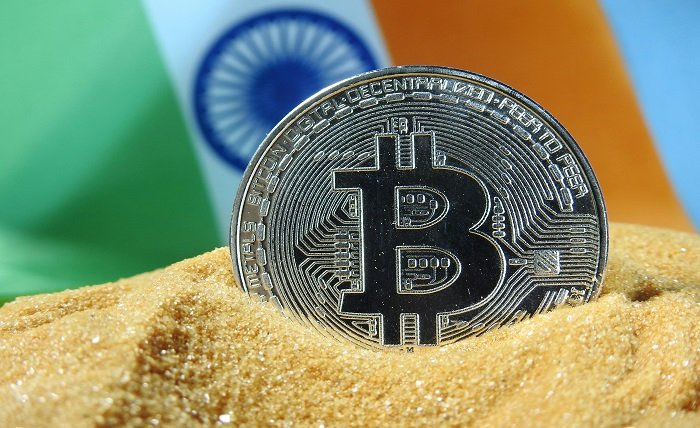In today’s crypto market, Bitcoin has come to represent both innovation and volatility. Investors in India wishing to include cryptocurrencies in their portfolios have to be aware of the possibilities and difficulties presented by Bitcoin price volatility.
Market volatility is one of the key obstacles for investors exploring the crypto scene, especially in developing nations like India. Although the prospect of large returns can be alluring, it’s important to keep in mind that the value of Bitcoin can vary greatly from hour to hour.
In this guide, we’ll outline five things that Indian investors need to know about Bitcoin volatility. Read on to learn more.
Historical Bitcoin Patterns
The volatility of Bitcoin is not a new phenomenon. From its launch in 2009, Bitcoin has experienced several boom-and-bust cycles, each propelled by a mix of technical developments, market speculation, and legislative changes. For example, Bitcoin’s price shot to almost $20,000 in 2017 before falling to less than $4,000 the next year.
These fluctuations in prices have persisted; more recent cases show the impact of macroeconomic elements such as inflation and interest rates. Being a high-risk asset class, Bitcoin’s volatility may be as much as three times higher than that of conventional stock markets.
Understanding these trends might enable Indian investors to create reasonable expectations. Think of Bitcoin as a long-term investment needing patience and extensive research rather than a get-rich-quick gimmick.
Why is Bitcoin So Volatile?
A number of factors can define Bitcoin’s value. Some of them are particular to the ecosystem of the cryptocurrency, while others include market situations, supply and demand, world economic situation, geopolitical events, and so on.
Another factor that can have an impact on Bitcoin’s value is the actions of government and central bank regulations. For instance, Bitcoin’s price fell virtually overnight when China declared a 2021 crackdown on crypto mining.
Likewise, traditional sell-offs in digital assets have been brought on by the U.S. Federal Reserve’s statements on interest rates. Often beyond the influence of individual investors, these external elements can cause dramatic price swings.
The rather low market liquidity of Bitcoin compared to conventional assets adds to the complexity. Large trades made by major investors, often known as “whales”, can drastically affect the market. Financial Times, Bitcoinmagazine, Binance and Decrypt, among other reputable platforms, have underlined the need for regular investors to be careful and educated when trading Bitcoin.
Effect of Volatility on Investment Approach
For Indian investors, Bitcoin’s volatility can be both a hindrance and an opportunity. Though it raises the possibility of large losses, significant price swings might present opportunities for notable gains. Your investing plan must match your financial goals and risk tolerance.
One fundamental concept to understand in the investment approach is diversification. Think about distributing your money over several asset classes, like stocks, mutual funds, and other cryptocurrencies like Ethereum or Solana, instead of concentrating a lot of it on Bitcoin alone. This reduces the impact of Bitcoin’s volatility on your portfolio.
Dollar-cost averaging (DCA) is another important tactic. Investing a certain amount of money at consistent times, regardless of price, will help you reduce volatility and prevent emotional investing decisions during market fluctuations.
Indian Tax Implications and Regulations
Regulatory uncertainty in India aggravates the volatility of Bitcoin. Although the Reserve Bank of India (RBI) has previously been dubious about cryptocurrencies, there have been no clear prohibitions on trading or possessing Bitcoin. Nonetheless, the government has developed tax laws that directly influence crypto investors.
A 30% tax on gains from digital assets has been applied as of the 2022 budget; no deductions are permitted except for acquisition expenses. Also, a 1% tax deducted at source (TDS) on crypto transactions adds still another degree of complication. Both compliance and strategic planning depend on Indian investors keeping current on legislative changes. For Indian investors, it’s essential that no market moves are made until they have a thorough understanding of the country’s regulatory landscape.
Reducing Risks With the Right Knowledge
Given the unstable nature of Bitcoin, it’s essential that investors educate themselves. Following credible financial news sources will enable you to make better judgments and offer insightful analysis of more general market movements.
To track trends and real-time data, investors should consider studying comprehensive data sets. Using these resources will allow you to monitor the price swings of Bitcoin and gain a better understanding of the underlying market trends.
Joining local crypto networks and forums also helps Indian investors discuss methods, exchange ideas, and keep ahead of possible changes in the market. But be careful about the sources of the material you depend on; unconfirmed social media posts can sometimes incite frenzy or panic.
Final Thoughts
The price volatility of Bitcoin is a natural feature of the crypto market and is unlikely to change anytime soon. The secret for Indian investors is to treat this asset carefully by constantly educating themselves about the latest trends, controlling their risks within portfolios through exposure by diversification, and, most importantly, holding a long-term view that uses the coin’s volatility as a vehicle for future growth. Use these tips to learn about Bitcoin’s volatility and leverage the asset’s unpredictability to your advantage.
